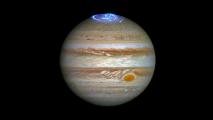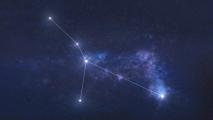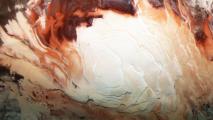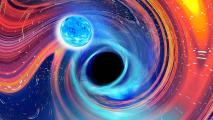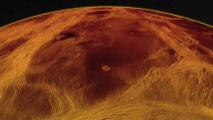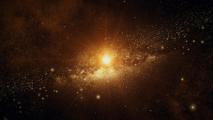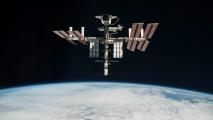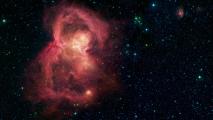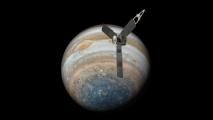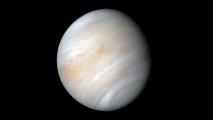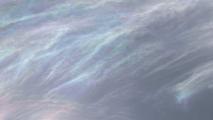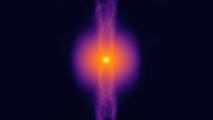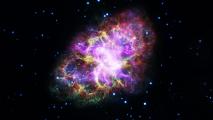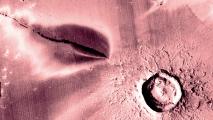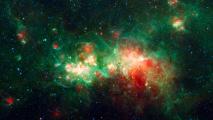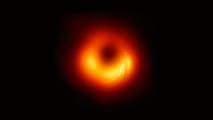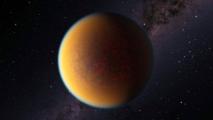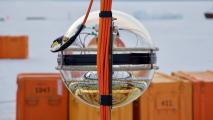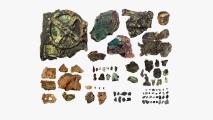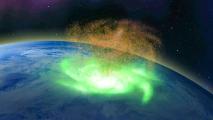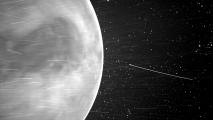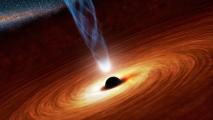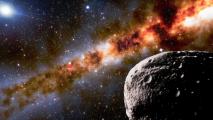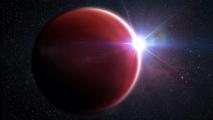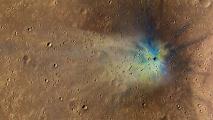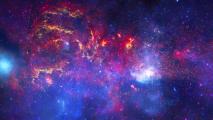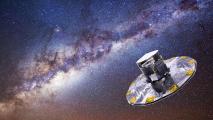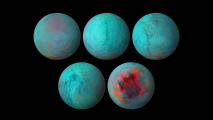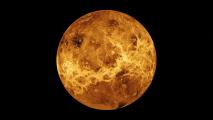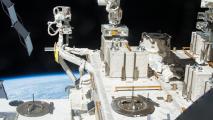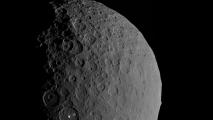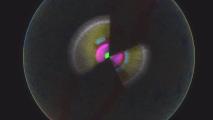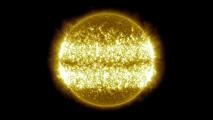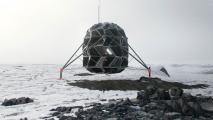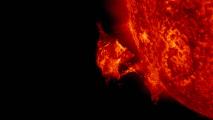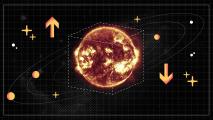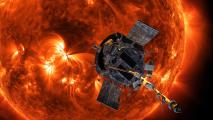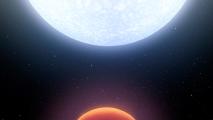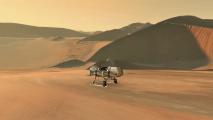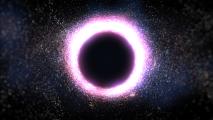Field: Astronomy
Amateur astronomer discovers new moon of Jupiter
An amateur astronomer has spotted an unknown moon of Jupiter, marking the first discovery of a planetary moon by a non-professional.
Sky-mapping system can predict whether cancer treatment will work
Johns Hopkins researchers are using image analysis developed for astronomy to study cancer immunotherapy.
New evidence discovered of underground water on Mars
Either underground water on Mars is far more prevalent than previously thought or something we can explain is going on beneath the Red Planet’s surface.
Black holes caught eating neutron stars for first time
Using gravitational waves, astronomers have observed collisions between black holes and neutron stars for the first time.
Chunks of Venus’ crust float like icebergs on its mantle
New evidence of tectonic activity on Venus expands our understanding of the hellish planet and offers a window into Earth’s own geological past.
See the first 3D map of the heliosphere
Astronomers have created the first ever 3D map of the heliosphere, using satellite data to reveal the part of the universe influenced by our sun’s solar wind.
Ion propulsion will power new space station
China's new space station will get a boost from an ion propulsion system, making it the first crewed spacecraft to feature the sci-fi-sounding engines.
Astronomers find more than 100,000 "stellar nurseries"
The biggest survey of stellar nurseries to date, PHANGS-ALMA, charts more than 100,000 star formation regions across our corner of the universe.
NASA probe snaps stunning photos of Ganymede
NASA has shared new photos of Ganymede taken by the Juno probe when it was just 645 miles away from Jupiter’s icy moon.
NASA announces first missions to Venus since the '80s
NASA has just approved two missions to Venus that will provide the scientific community with a wealth of new data on Earth’s closest planetary neighbor.
Colorful clouds on Mars captured in new rover pics
NASA’s Curiosity rover has captured images of colorful clouds on Mars, forming at higher altitudes and earlier in the Martian year than expected.
See the most realistic simulation of star formation yet
A new simulation of star formation is the most realistic ever created, giving scientists an unprecedented opportunity to study the birth of a star.
Radioactive plutonium from space found in Pacific Ocean
A rare form of plutonium has been discovered on Earth for the first time — and an exploding star appears to have helped it get here.
Volcanoes on Mars might still be active
New evidence suggests that volcanoes on Mars may have erupted just 50,000 years ago, far more recently than previously thought.
Algorithm quickly simulates massive universes in high-res
A new algorithm lets astrophysicists produce high-res cosmological simulations of large parts of the universe far more quickly than was previously possible.
New black hole image reveals swirling magnetic fields
A new black hole image depicts one of the supermassive objects in polarized light, making it possible to see its magnetic field lines.
A distant exoplanet made itself a second atmosphere
A distant exoplanet, GJ 1132 b, appears to have created a second atmosphere for itself after being stripped of its first.
New underwater telescope could explain birth of the universe
The world’s second-largest neutrino detector is now observing “ghost particles” from below the ice of Siberia’s Lake Baikal.
Ancient computer found in shipwreck decoded by scientists
A new model explains how an ancient computer known as the Antikythera Mechanism could have made complex astronomical predictions.
Space hurricane rains electrons down on North Pole
A space hurricane formed above the North Pole in 2014, marking the first discovery of the theorized — but never proven — extreme space weather event.
Solar probe snaps surprising photo of the surface of Venus
The Parker Solar Probe has taken an image of the surface of Venus that may change what we thought we knew about the planet — or possibly the probe itself.
See 25,000 supermassive black holes in one map of the sky
Astronomers used supercomputers and an international network of antennas to create a map of 25,000 supermassive black holes.
This planetoid is officially the farthest known object in our solar system
A planetoid nicknamed Farfarout is officially the most distant known object in our solar system — but its reign might not last for long.
This cloudless “hot Jupiter” is unlike any known exoplanet
Astronomers have discovered a first-of-its-kind cloudless hot Jupiter — and it could expand our understanding of exoplanet formation.
An AI has discovered new craters on Mars
An AI trained to spot signs of fresh craters on Mars in photos of the Martian surface has already discovered dozens of new impacts.
Scientists may have found the hum of the universe
Scientists may have recorded the "hum" of the universe for the first time by measuring irregularities in gravitational waves.
See the Milky Way 1.6 million years from now
Using data from the Gaia spacecraft, ESA scientists predict where 40,000 stars in the Milky Way will be 1.6 million years from now.
Fresh ice spotted in unexpected part of Saturn's moon Enceladus
Saturn’s moon Enceladus is already suspected of hosting extraterrestrial life, and new Cassini data suggests where that life might exist.
Signs of life found on Venus
Scientists found the gas, phosphine, in Venus’ atmosphere. So far, the only explanation is alien life.
Did life on Earth travel here from Mars?
Bacteria that survived on the outside of the ISS for three years suggests that panspermia is still a viable theory for the origin of life on Earth.
The dwarf planet Ceres may hide a subterranean sea
The largest body in the asteroid belt, the dwarf planet Ceres may hide a salty subterranean sea.
Massive 3D map of the universe fills in “troublesome” gap
The Sloan Digital Sky Survey (SDSS) has released the largest 3D map of the universe ever created, detailing 11 billion years that were previously uncharted.
This 10-year time lapse of the solar cycle is breathtaking
Using images collected by the Solar Dynamics Observatory (SDO), NASA has created a stunning time lapse of the sun’s solar cycle.
Space architects are building a home to live on the moon
The space architects of Saga have developed a habitat for people on the moon. Now they want to put it to the test in the endless arctic sun of Greenland.
You can help scientists during the coronavirus quarantine
Getting bored during the coronavirus quarantine? Researchers are looking for volunteer citizen scientists to help analyze distant galaxies from home.
This 93-million mile deep space mission might catch the next super solar storm
A newly funded satellite mission could help us keep a watchful eye on the sun’s activity, buying us more time to prepare for a potential solar storm.
Want to visit the moon? NASA is accepting astronaut applications
NASA has announced plans to begin accepting applications for its next class of Astronaut Candidates, some of whom may go on to visit the moon or even Mars.
Move the sun, save the earth: the plan to relocate our solar system
This stellar engine could harness the power of the sun to drag our solar system throughout the galaxy, preventing a catastrophic collision.
Closer to the Sun: NASA’s Parker Solar Probe
NASA is getting closer to the sun than ever before with the Parker Solar Probe, leaving researchers excited and bewildered by the data they saw.
Is anybody out there?
New breakthroughs in the technology used for exoplanet discovery mean we could find proof for the existence of extraterrestrials in our lifetime.
Series|
Through the Looking Glass
AR in use: NASA's Dragonfly mission to Titan
With a keen curiosity to learn more about how life formed on Earth, NASA has plans to send a spacecraft called the Dragonfly to Saturn’s largest moon, and they’re using augmented reality to make it happen.
What is inside a black hole?
In partnership with John Templeton Foundation
Rendering the first black hole image was an important milestone. But in many ways, the true value of the project lies in how it created an opportunity for researchers to change the way they explore the world.
